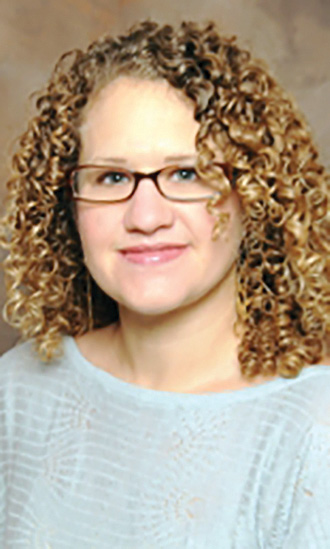Grant Supports Exploration of Fear-Mental Illness Connection
FACULTY ACHIEVEMENT
Ahmed V. Ortiz
“Dr. Furtak is doing incredible things, and I look forward to following her and her student’s research.” - President Robert S. Nelsen

Sharon Furtak’s research into fear and its ties to mental illness caught the attention of the National Science Foundation, which awarded a $465,000 grant to support her team’s work. Photo courtesy of Department of Psychology
Research by Sacramento State psychology Professor Sharon Furtak and her team—aided by a four-year, $465,000 National Science Grant—aims to boost understanding of the roots of fear and how it can become something more ominous.
The grant, one of the largest ever received by Sac State faculty, will support work that could lead to discovery of new approaches and greater insights into fear and its link with mental illness.
“(Dr. Furtak) excels at teaching and institutional service, as well as maintaining a cutting-edge program of research,” says Rebecca Cameron, Department of Psychology chair.
Furtak is exploring how fear can trigger anxiety disorders such as post-traumatic stress, obsessive compulsiveness and phobias, problems research shows can develop into significant mental illness.
She believes that understanding parts of the brain that regulate emotions could lead to treatment breakthroughs.
“If I play a sound for you, it may have no meaning to you,” she says. “But after I pair that sound with a finger shock or some sort of (negative) stimulus, you’re going to … learn that sound is bad. Of course in the real world, learning to fear is much more complex than that.”
Sac State President Robert S. Nelsen visited Furtak’s lab, featuring 12 students on her team, in September and came away impressed.
“I … was amazed by the work happening there,” Nelsen says. “Dr. Furtak is doing incredible things, and I look forward to following her and her student’s research.”
Ultimately, Furtak hopes to further an understanding that mental illness is neurological and not “some sort of behavior people should be able to control.”
The work takes on personal dimensions for Furtak, whose parents divorced when she was 7, a trauma that plunged Furtak’s mother into “severe mental illness.” Later, when Furtak was in college, her mother was diagnosed as suffering from schizophrenia and obsessive compulsive disorder.
Her mother and family remain in her native New England, but Furtak continues to play a primary role in helping ensure her mom’s wellness.
“She’s had tremendous growth over the last 10 to15 years,” says Furtak, whose continuing work ultimately could help her mother and many others even more.
Permission to do research granted...
Some of the grant-funded faculty research at Sac State. Funding from National Science Foundation unless noted.
-
$217,000 over 3 years : To Michael Ray (Physics), for “Experimental study of dipolar solid helium.”
-
$194,000 over 3 years: To David Zeanah (Anthropology), for “Explaining Great Basin Prearchaic adaptions through foraging decisions.”
-
$50,000: To Pinar Muyan-Ozcelik (Computer Science) from Intel Corporation, for “Real-time speed-limit recognition on FPGA-based vs. on GPU-based embedded platforms.”
-
$300,000 over 3 years: To Julian Fulton (Environmental Studies) and Ying Jin (Computer Science) from the EPA, to develop an energy-water-emissions dashboard.
-
$1.5 million over 5 years: To Lynn Tashiro (Physics), Mary McCarthy-Hintz (Chemistry) and Di Xu (UC Irvine), for “Building Capacity: STEM faculty professional learning in the zone of proximal development.”
-
$66,000 over 3 years: To Farzan Kazemifar (Mechanical Engineering), for “Intermittency in multi-phase flows in 2-D and 3-D porous media: coordinated experiments and simulations.”
-
$425,000 over 4 years: To Katherine McReynolds (Chemistry) from the National Institutes of Health, for “Development of glycodendrimers as potential anti-HIV microbicide agents.”
-
$108,000 over 3 years: To Clayton Visger (Biological Sciences), for “Understanding the effects of ploidal level on responses to global change in plants.”
-
$165,000 over 3 years: To Rodolfo Barniol Duran (Physics), for “Short gamma-ray bursts arising from misaligned structured jets in the dawn of gravitational wave astronomy.”
11/12/18